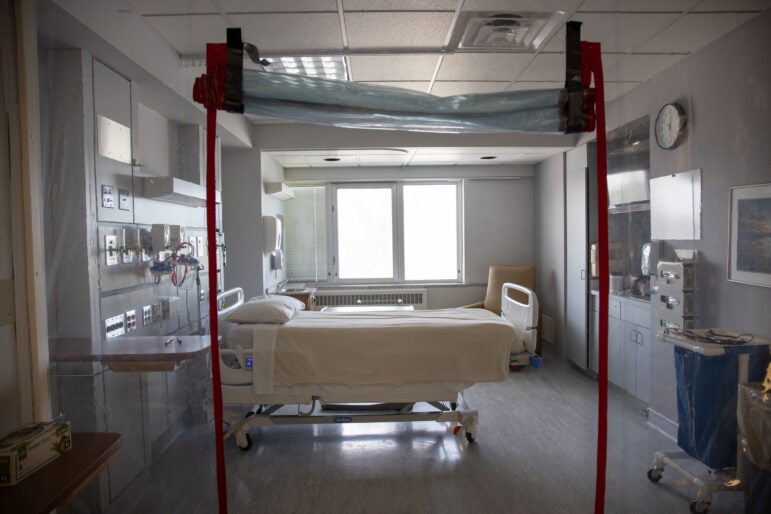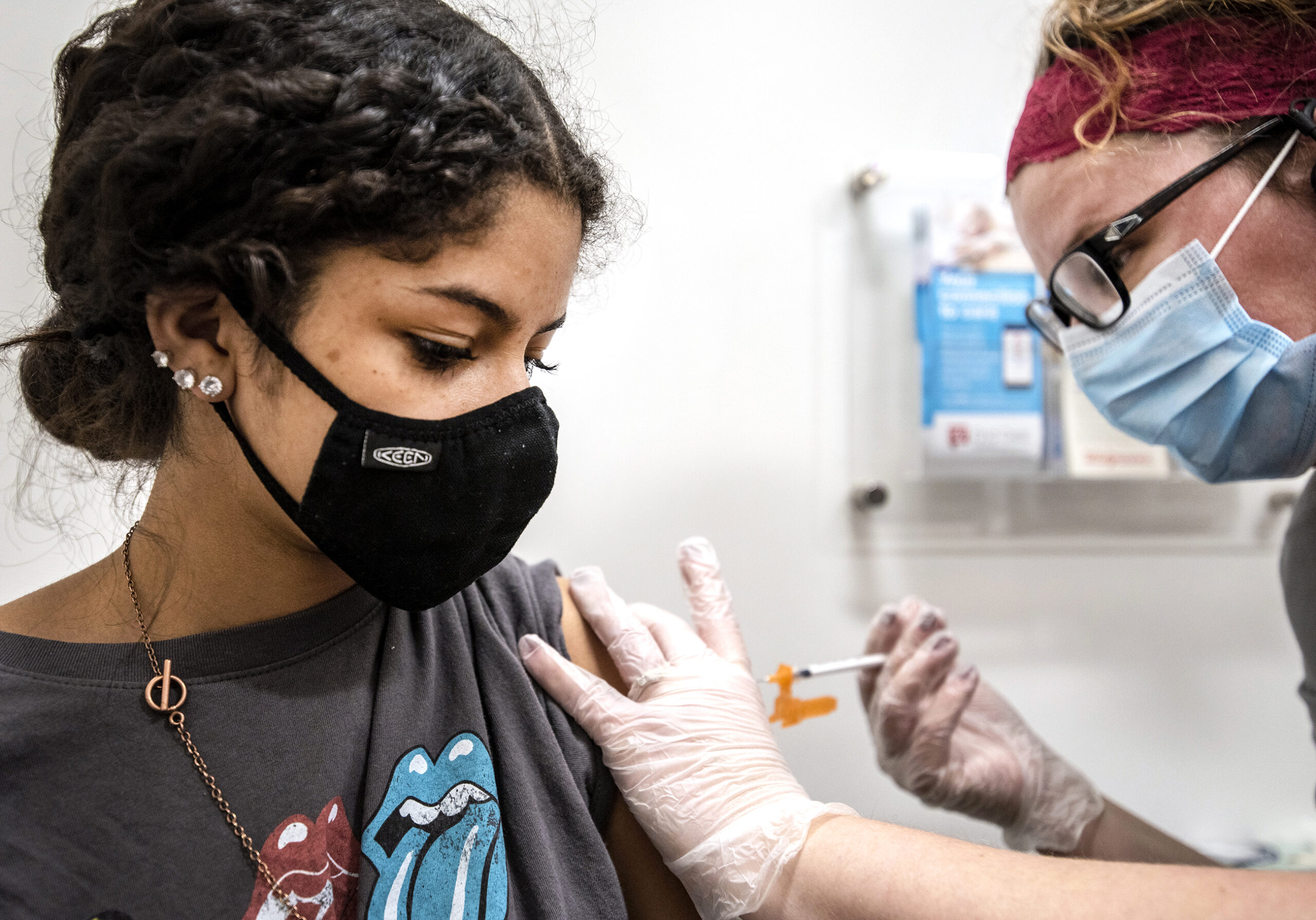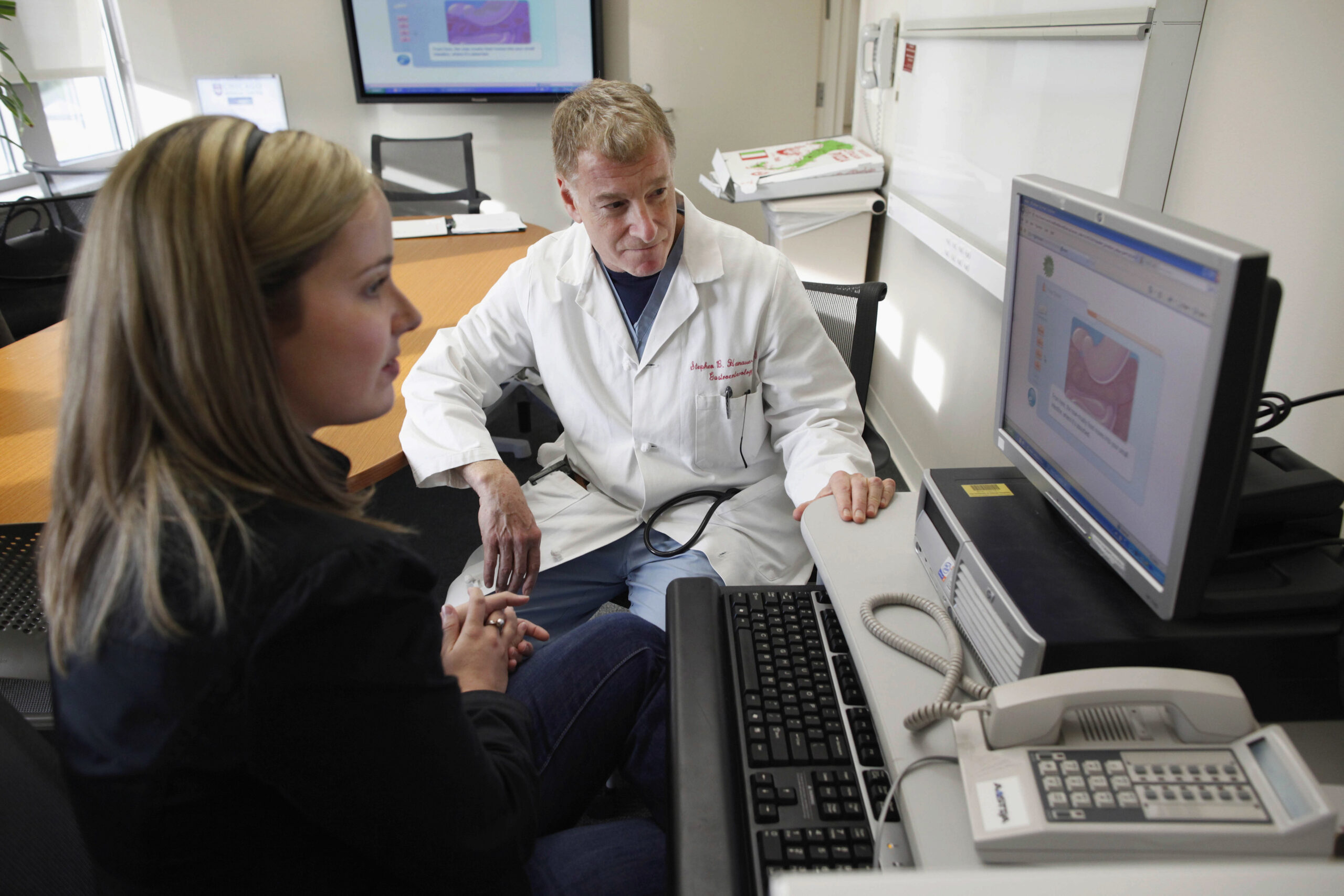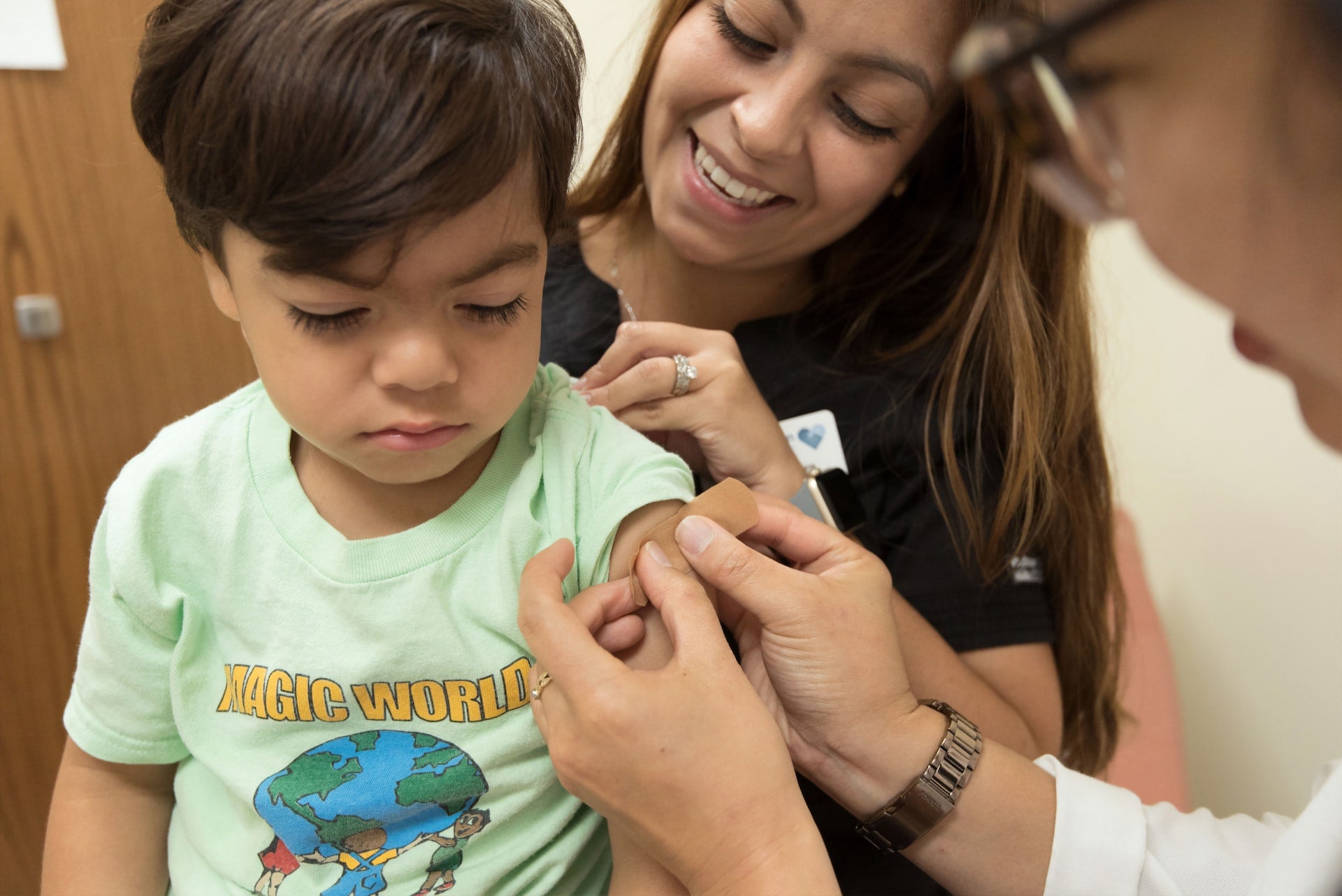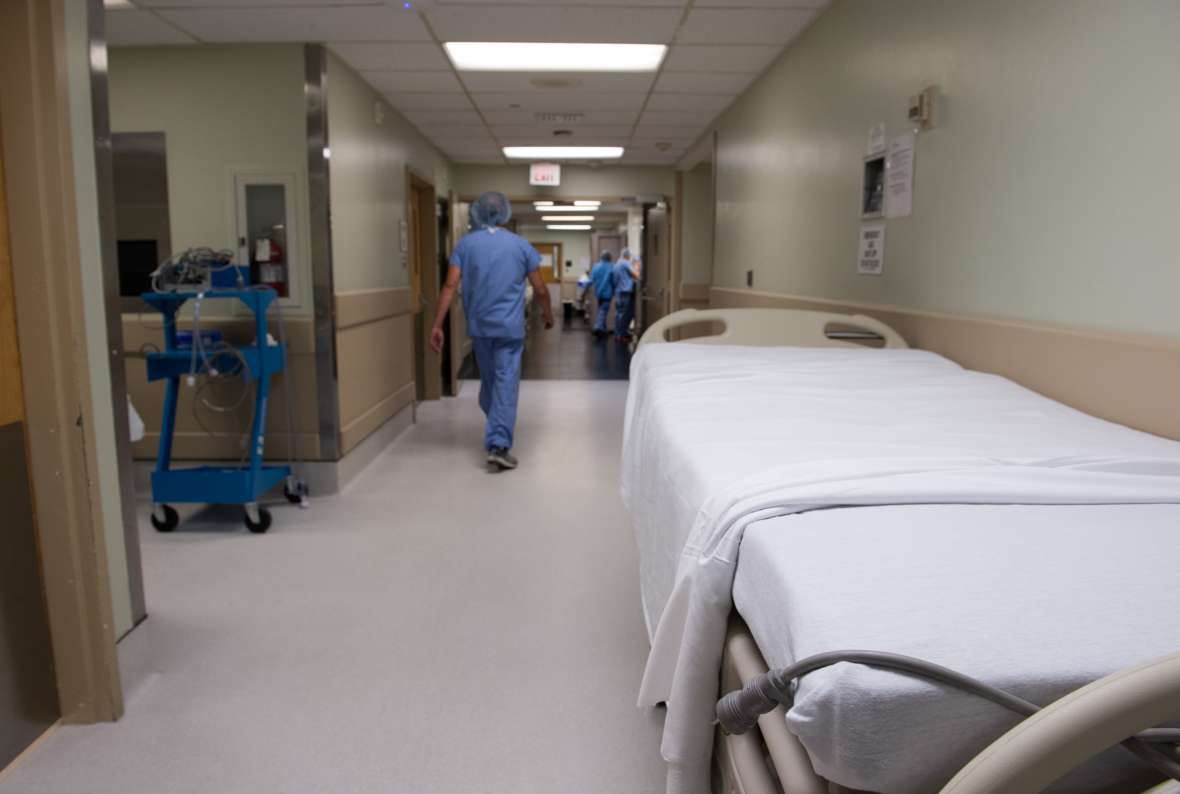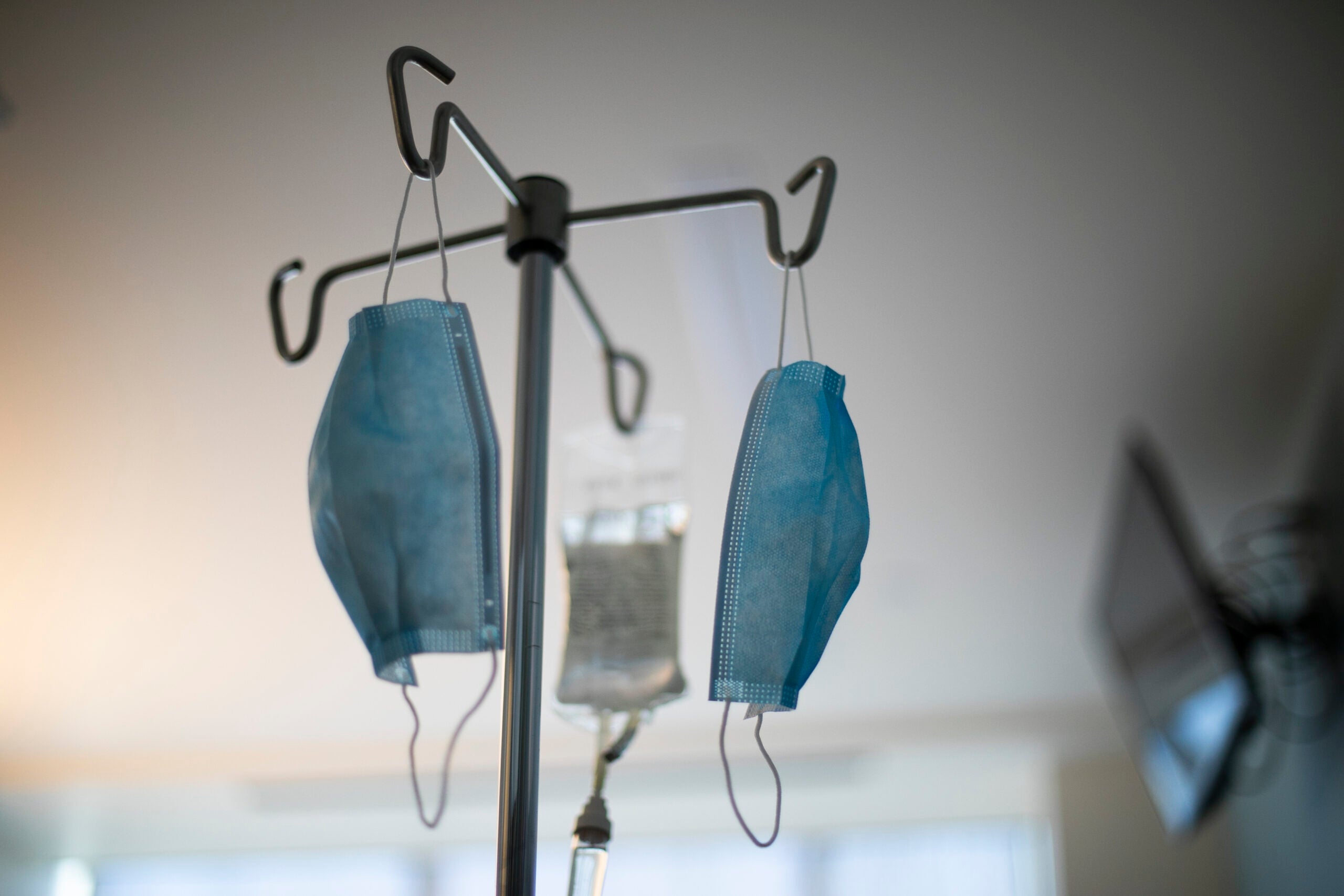Two rural Wisconsin hospital leaders gave a glimpse Thursday into how their facilities have stayed afloat during the COVID-19 pandemic amid staffing shortages, capacity limits, unvaccinated patients and now the omicron variant.
One of those leaders has had their director of information technology swabbing patients’ noses for COVID-19 tests, a steep increase in staff members out with COVID-19 recently and a testing center flooded beyond its capacity.
The other has had patients get treatment in hallways with sheets as walls, and other patients stay in emergency room beds because they have nowhere to go.
Stay informed on the latest news
Sign up for WPR’s email newsletter.
Both officials advocated for vaccines as the best way to make sure an infection doesn’t send you to the hospital, but they shared how they approach the topic in areas lagging in vaccination rates.
CEO and President Lisa Schnedler runs Upland Hills Health in Dodgeville. She spoke to the IT director and staffing troubles.
Philip Bovet, an emergency room provider with Aspirus Medford Hospital, addressed the ER beds and hallway space.
“We’re still seeing people with heart attacks, strokes, accidental injuries, bone fractures and various other things, too,” Bovet said Thursday on Wisconsin Public Radio’s “The Morning Show.” “That hasn’t gone away at all with our normal community needs. So, having COVID on top of that with the omicron wave is just — it’s all the more.”
That omicron wave has translated into the third record-setting number of new infections this week alone reported by the state’s health department. On Thursday, the state Department of Health Services tallied 11,574 new cases and 2,002 hospitalizations.
READ MORE: COVID-19 hospitalizations prompt Madison hospitals to postpone procedures
Space, staffing and tests
To be clear, all kinds of hospitals statewide are struggling. But Schnedler and Bovet could speak specifically to the challenges they face in rural communities.
When compared to other pandemic peaks, Bovet said in this omicron wave, he’s seeing more “boarders” — a term for patients staying in ER beds because the facility doesn’t have space elsewhere.
Speaking Thursday morning, Bovet was about to start another shift at the ER. Two patients whom he saw on his last shift about 30 hours prior were still there.
Two weeks ago, Schnedler said her hospital was dealing with real capacity problems. Patients filled all the beds and hospital staff spent hours on the phone hoping for transfers that wouldn’t go through.
“It was pretty dire at that point,” she said.
But right now, she said staffing vacancies are her biggest omicron-related concern, whether it be from cases among staff members or exposures within their families.
Schnedler said their COVID-19 testing is “astronomically high,” more than they have seen to date.
Usually, staff members who take tests in the morning would see results by the afternoon. Their testing center in southwestern Wisconsin has a capacity of 1,000 tests per day — but Wednesday saw 2,000 tests, meaning the facility was operating on a 48-hour delay, she said.
Worried about supply, the center is now being more particular about using the tests they have.
Before, if someone tested positive, she said their whole family would show up to get tested. Now, they have to be more selective on who gets tested. She said they pass up screening younger, healthier family members and more directly targeting the grandparents, for example.
“We’re trying to just hold on to those test kits until we can get a good supply of them,” she said. “We have a sufficient supply right now, but we don’t have the abundant supply we had four weeks ago.”
When staffing is in trouble, hospitals can pay extra to have travel nurses come in. Schnedler said they typically cost three or four times more than their own staff members, and they require time to get oriented to the hospital’s equipment and records system.
“We’ve had two at a time, maybe. Oftentimes, none,” she said. “We have seven on site now, and we could use more.”
Schnedler said she’s grateful for the financial reserves the hospital has saved up for moments like this.
[[{“fid”:”1418576″,”view_mode”:”full_width”,”fields”:{“alt”:”A woman receives the vaccine from a nurse”,”title”:”COVID-19 Vaccine”,”class”:”media-element file-embed-landscape”,”data-delta”:”1″,”format”:”full_width”,”alignment”:””,”field_image_caption[und][0][value]”:”%3Cp%3ERegistered%20nurse%20Kristi%20Sauser%2C%20right%2C%20receives%20a%20second%20dose%20of%20the%20Pfizer-BioNTech%20COVID-19%20vaccine%20from%20licensed%20practical%20nurse%20Cindy%20Stansfield%2C%20left%2C%20on%20Thursday%2C%20Jan.%207%2C%202021%2C%20at%20SSM%20Health%20St.%20Mary’s%20Hospital%20-%20Madison.%20%3Cem%3EAngela%20Major%2FWPR%3C%2Fem%3E%3C%2Fp%3E%0A”,”field_image_caption[und][0][format]”:”full_html”,”field_file_image_alt_text[und][0][value]”:”A woman receives the vaccine from a nurse”,”field_file_image_title_text[und][0][value]”:”COVID-19 Vaccine”},”type”:”media”,”field_deltas”:{“1”:{“alt”:”A woman receives the vaccine from a nurse”,”title”:”COVID-19 Vaccine”,”class”:”media-element file-embed-landscape”,”data-delta”:”1″,”format”:”full_width”,”alignment”:””,”field_image_caption[und][0][value]”:”%3Cp%3ERegistered%20nurse%20Kristi%20Sauser%2C%20right%2C%20receives%20a%20second%20dose%20of%20the%20Pfizer-BioNTech%20COVID-19%20vaccine%20from%20licensed%20practical%20nurse%20Cindy%20Stansfield%2C%20left%2C%20on%20Thursday%2C%20Jan.%207%2C%202021%2C%20at%20SSM%20Health%20St.%20Mary’s%20Hospital%20-%20Madison.%20%3Cem%3EAngela%20Major%2FWPR%3C%2Fem%3E%3C%2Fp%3E%0A”,”field_image_caption[und][0][format]”:”full_html”,”field_file_image_alt_text[und][0][value]”:”A woman receives the vaccine from a nurse”,”field_file_image_title_text[und][0][value]”:”COVID-19 Vaccine”}},”link_text”:false,”attributes”:{“alt”:”A woman receives the vaccine from a nurse”,”title”:”COVID-19 Vaccine”,”class”:”media-element file-full-width”,”data-delta”:”1″}}]]
Vaccines, vaccines and vaccines
Bovet said up to 90 percent of COVID-19 admissions into his hospital are unvaccinated patients.
When speaking with COVID-19 patients, he wants to ask about vaccination status. But he said staff get complaints — it’s too personal of a question, or they say they don’t want to talk about it, he recalled.
In the ER, Bovet said he’s not supposed to ask about insurance until the end. He tries to bring up vaccination status during his insurance questions so he can still recommend it without the patient fearing that they might not get a certain treatment based on their answer.
Bovet is in Taylor County, where state officials reported that about 35 percent of the population has their first vaccine dose — a mark that is the lowest rate in the state.
READ MORE: Delta ‘opened the door’: Rural deaths from COVID-19 now higher than in urban areas
He said the vaccination rate correlated with the Republican political tilt of the county, even though he wished the vaccine wasn’t politicized.
“It’s disheartening,” he said. “We’re not trying to get their vote. We’re just trying to help save their lives.”
Schnedler said the patients who have harsh complications from COVID-19 tend to be unvaccinated. But emotions are running high, and she wants her staff to be respectful while also advocating for what is in the patient’s best interest.
“We’re not here to argue with them,” she said. “Our belief for your best health is to get vaccinated and to get boosted. But if you have made a choice different than that, we’re here for you still.”
READ MORE: Rural hospitals report losing 2 percent of workers over COVID-19 vaccine mandates
What may make rural hospitals different than urban ones is the likelihood that doctors and nurses are treating their neighbors, friends or family.
Schnedler admired the level of heart it takes for her staff to work like this during the pandemic. Bovet praised his team, too, and fondly recalled the hospital’s Secret Santa that helped “brighten the mood.”
“It is bad now,” he said. “But it’ll pass eventually.”
But when is eventually? It’s not clear, and these hospitals are just trying to get through another pandemic peak.
“With omicron being two-to-three times more contagious, just the sheer volume of numbers is going to be concerning,” Bovet said. “Especially over the next one-to-two weeks, that’s I think how we’re going to know when this wave peaks out and what the numbers are going to be.”
“So, until then, it’s just trying to brace ourselves the best we can,” he said.
Wisconsin Public Radio, © Copyright 2024, Board of Regents of the University of Wisconsin System and Wisconsin Educational Communications Board.
